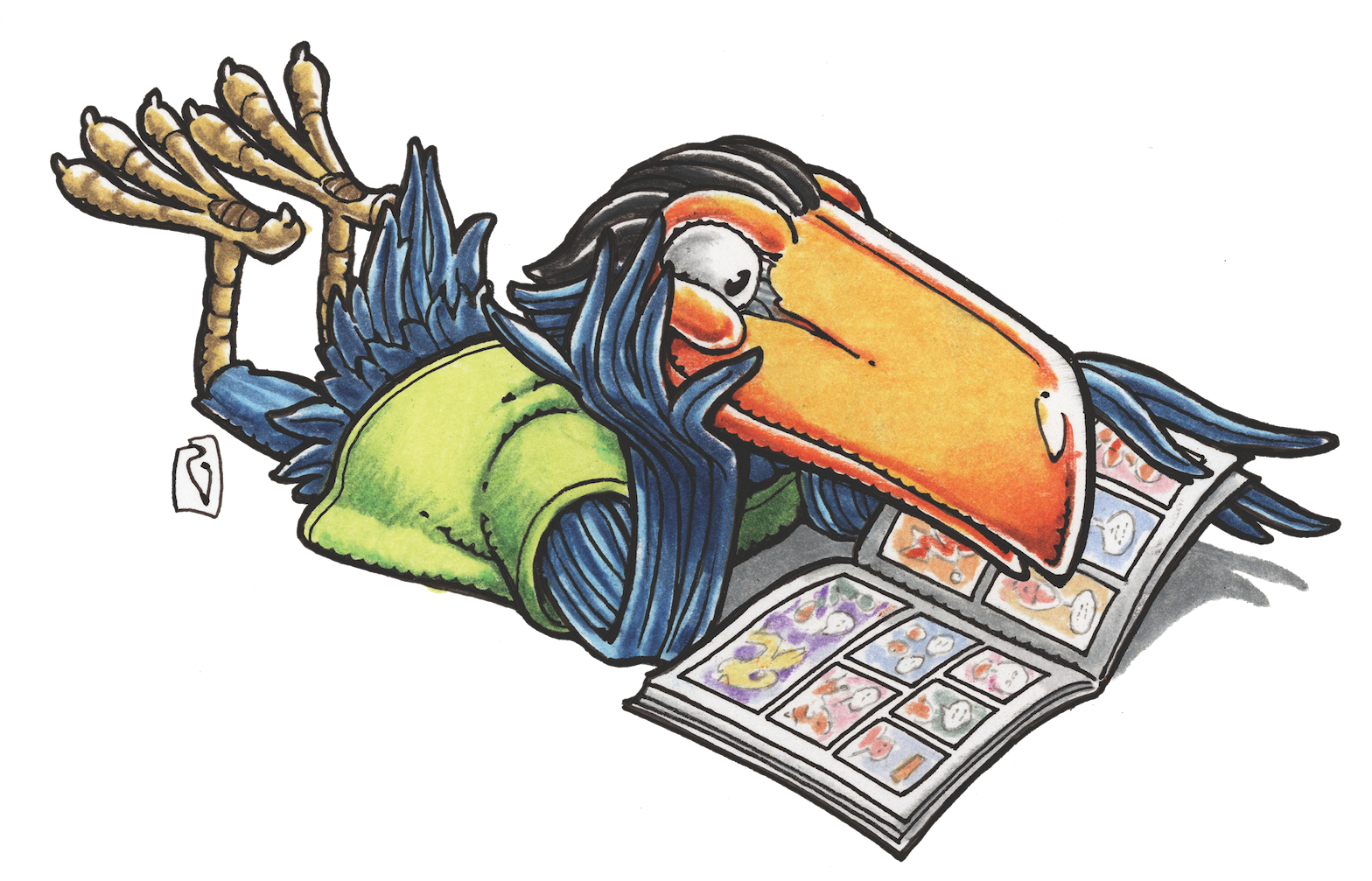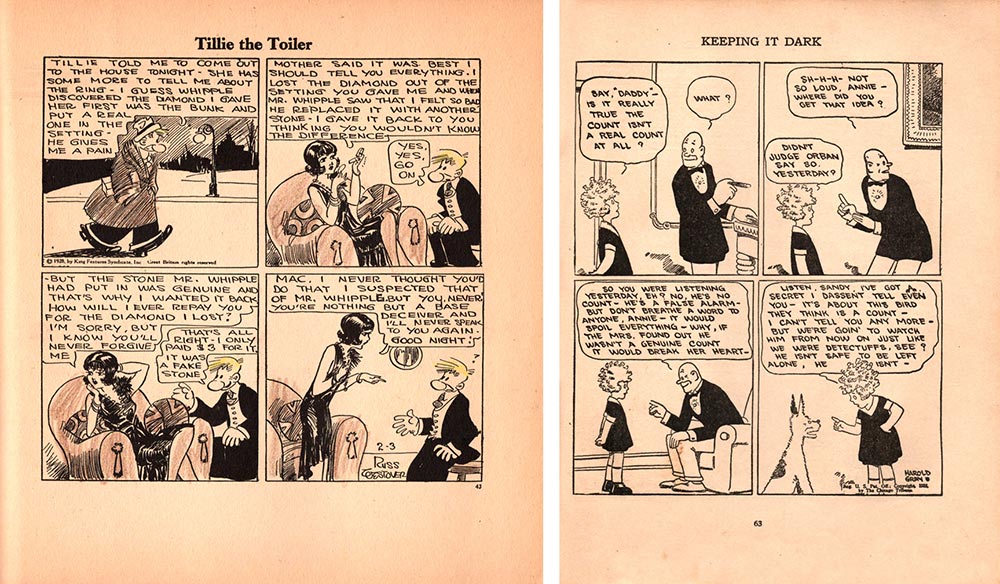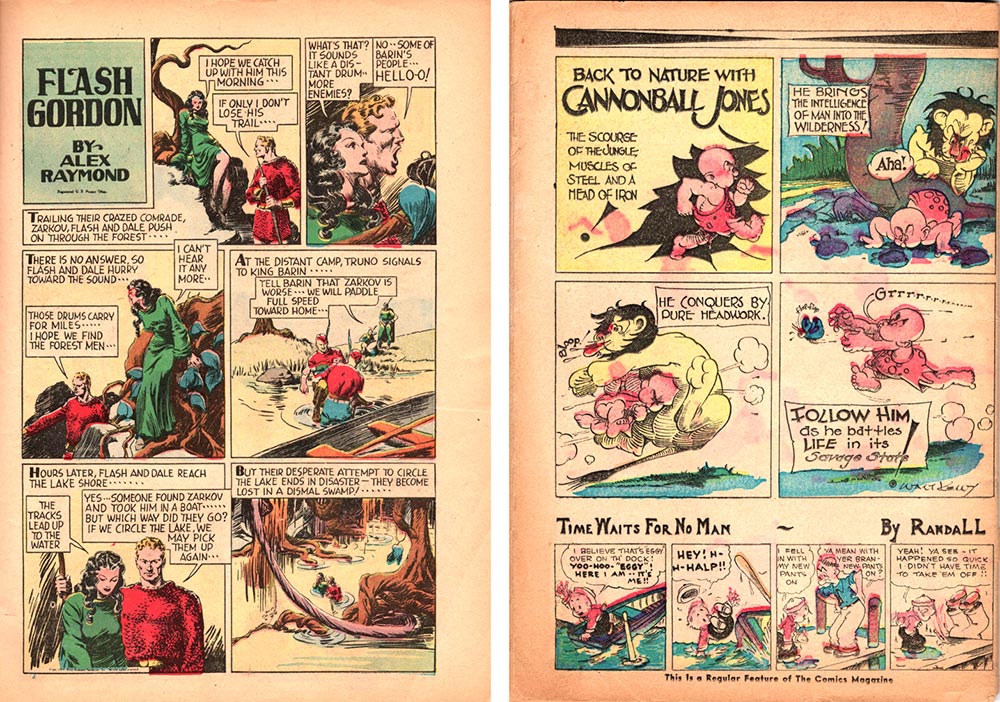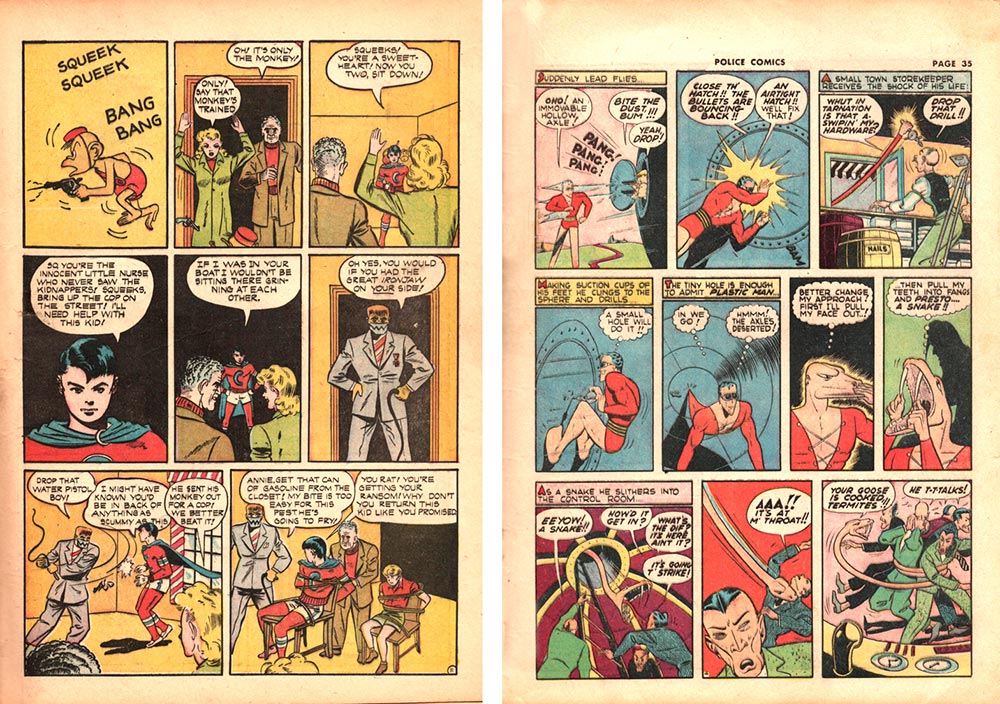MAGGIE’S WORLD BY MAGGIE THOMPSON
Maggie’s World 083: The Depression Comics Challenge

Someone online recently noted that, when Pogo creator Walt Kelly graduated in 1930, he left high school just as the realities of the Great Depression were taking hold. Creative kids his age had seen the fun and pop culture entertainments of the “Roaring ’20s” turn into the challenge of making their way in what amounted to a new world.
The Great War had ended, and the so-called Spanish Flu had run its course. Everything was going to be “normal.” And then it wasn’t.

1920s Comics
A basic text for many early comics fans was Stephen Becker’s Comic Art in America (1959)—and let’s make it clear: The more closely we look at it, the more elaborations and corrections we want to make. Nevertheless, it can provide perspective to this day.
Becker commented that newspaper comic strips of the 1920s featured: “families and kids, normalcy in its purest form—and we find no gangsters, footballers or (except for Carl Ed’s Harold Teen) pioneer hot-rodders.” In other words, kids who left school then and grew up to be comics pros had, as the basics of their comics education, such strips as Boots and Her Buddies, Ella Cinders, Fritzi Ritz, Gasoline Alley, Little Orphan Annie, Minute Movies, Moon Mullins, Mutt and Jeff, Our Boarding House, Out Our Way, Skippy, Smitty, Thimble Theatre, Tillie the Toiler, and Wash Tubbs.
Then It Was the 1930s
Becker continued: “The comics section … began another period of expansion. … For one thing, the comics were surviving the worst economic tragedy in our history; for another, they were expanding; and for a third, their expansion was not limited to more strips of the already familiar type—the subject matter of comic strips now seemed unlimited. If life was real and earnest, we would have real and earnest comics. If Capone was a national figure, Dick Tracy would shortly be even better known. If the China Clipper could connect America and Asia, so could Milton Caniff.” He wrote, “The adventure strip was the significant development of the 1930s.”

So, if you were entering the work force to look for a job writing or drawing comics in 1930, what could you do?
Some of those who faced the challenge and met it became pretty well known, as in this partial list: Charles Addams, Joe Barbera, C.C. Beck, Charles Biro, Jack Bradbury, Bob Clampett, Jack Cole, Vincent Fago, Lee Falk, Lou Fine, Bill Finger, William Hanna, Syd Hoff, Burne Hogarth, Ollie Johnston, Chuck Jones, Walt Kelly, Jack Kirby, Ward Kimball, Paul Murry, Joe Shuster, Jerry Siegel, Joe Simon, John Stanley, Saul Steinberg, Frank Thomas, and Bill Woggon
Opportunities
As noted, there were already popular newspaper strips. For many budding creators, producing a hit strip might have seemed to be where the big bucks beckoned. It was an understandable goal—but one that could be hard to reach.
How about a fresh storytelling format? The comic-book industry was not (yet) an industry for those kids; it hadn’t even been created in 1930. But in the middle of the year 1933, the giveaway Funnies on Parade was released. By the end of that year, it was joined by Famous Funnies–A Carnival of Comics and Century of Comics. By the end of the year after that, there were Skippy’s Own Book of Comics and Famous Funnies. And 1935? It saw New Fun, The Big Book of Fun Comics, and New Comics. And then it was 1936. Well, howdy. The Comics Magazine, Detective Picture Stories, Funnies, Funny Pages, Funny Picture Stories, King Comics, More Fun, Popular Comics, and Tip Top Comics … Could Detective Comics be that far in the future?
Print publication wasn’t the only possible option early in the 1930s. For example, animation techniques were already established—and so were studios. Max Fleischer had developed the rotoscope and gone on to set up a studio in which more techniques and projects were created. Walt Disney, after having co-created and lost the cartoons produced as work for hire, had also established his own studio and was gearing up to produce an actual feature-length cartoon. In short, animation studios were looking for writers and artists and …

For Example
Even in high school, Walt Kelly had worked at his local newspaper; after graduation, he even drew that paper a comic strip about the life of P.T. Barnum. While he was also hired for a few freelance assignments while living on the East Coast, he wanted to produce a different sort of comic art. Walt Disney Productions was his goal, he applied to work there, and he was hired.
As he worked for Disney on a variety of projects for the next five and a half years, he became friends with several of his fellow writers and artists. Like many other fledgling creators there, he’d eventually go on to work in the new comic book industry.
But wait. We were wrapping up the 1930s. And the 1940s were just ahead.
Well, then—
Oh, you get the idea.
Kelly, for example, had returned to the East Coast, where he began to freelance his comic book stories to Dell Editor Oskar Lebeck. By the time America joined the combat in World War II, magazines, animation, newspapers, and more were featuring a variety of comic art popular culture. These days, fans call some of what was produced then “Golden Age comics.” (Look again at that list of creative kids who were growing up in the early 1930s.)
2020
Now, here we are, nine decades after that Great Depression. We’re on the brink of what will be another huge challenge for young creators. They’re in their teens or twenties and they want to make comic art, while the world endures self-isolation. What are their career options?
And how do they make that career pay?
Mind you, today’s creators have tools of which those 1930s kids could have only dreamed. We’re now way beyond typewriters for scripts, pen or brush and ink for art, and four separate lead plates for printing color. Artists used to maintain swipe files that even included Sears catalogs for valuable basic reference. (Imagine trying to draw a scientific laboratory—or just a microscope—if you didn’t have another image to guide you.)
Today, even self-publishing on the Internet is an option.
And oh! The tools! The social outreach! In-person collaboration is fraught with complications, but kids today can coordinate projects with kids in other towns or states or countries. Reference materials and how-to information are a click away. So is possible piracy of fresh creations.
And. But. And. But. And. But.
What’s next?
Heck if I know. Let’s wait to see what these skilled grads will do.
And let’s wish them well.
Maggie’s World by Maggie Thompson appears the first Tuesday of every month on Toucan!